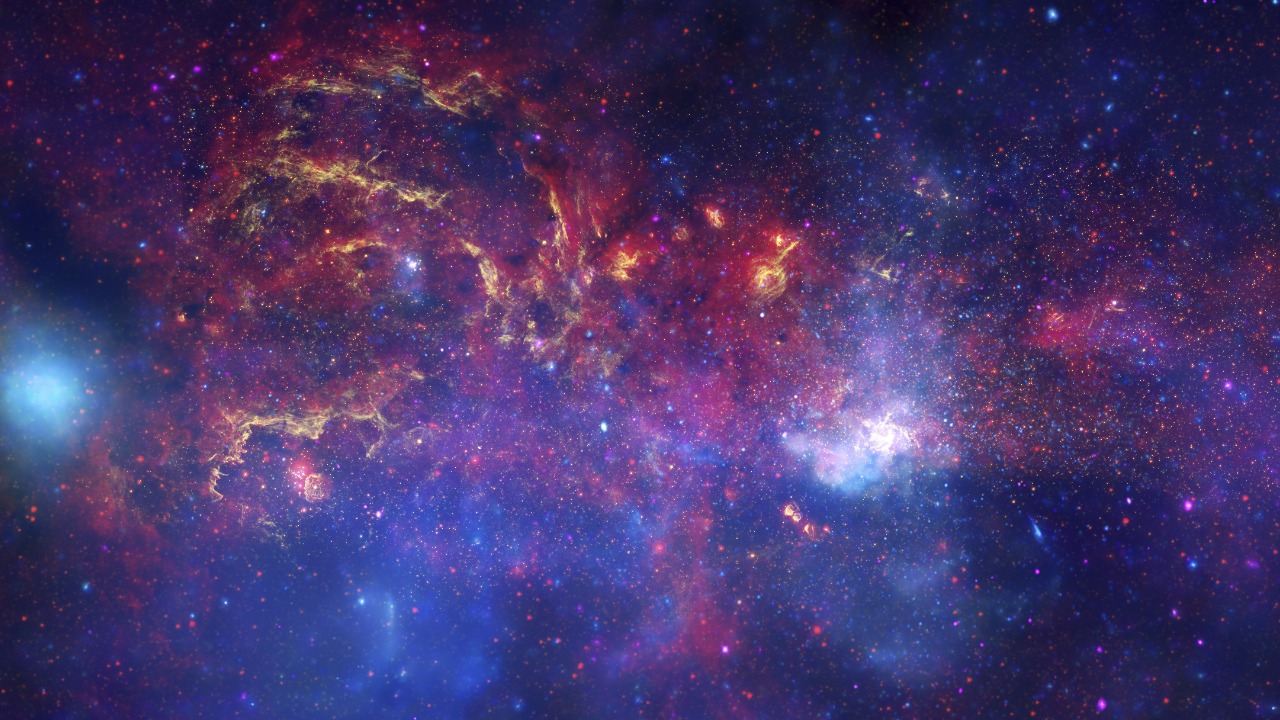
A mysterious glow has been detected in the Milky Way, challenging our understanding of cosmic emissions and hinting at the possibility of new physics. This unexplained illumination, observed through advanced telescopes, could be the result of dark matter interactions at the galaxy’s core. Recent studies also suggest that a distant cosmic object might be involved, either as dark matter or a dwarf galaxy.
Observing the Unexplained Glow
The initial detection of this mysterious glow in the Milky Way revealed spectral signatures that do not match known stellar or gaseous sources. This anomaly was first observed in early 2025, when gamma-ray telescopes detected excess emissions centered at the heart of our galaxy. The intensity and distribution of this glow span thousands of light-years, setting it apart from typical astrophysical processes.
Dark Matter’s Role in Galactic Centers
Theoretical frameworks suggest that dark matter annihilation could produce the observed photons. Models predicting such signals in dense regions like the Milky Way’s core support this hypothesis. An analysis from March 10, 2025, proposed a new dark matter suspect as a possible explanation for the mysterious phenomenon at the heart of the Milky Way. Simulations show that collisions of dark matter particles in the galactic bulge could explain the energy profile of the glow.
Exploring Dark Dwarfs as Candidates
Another hypothesis suggests that dark dwarfs, compact, low-luminosity objects, could contribute to the emissions. Inquiries from July 16, 2025, investigated whether dark dwarfs are lurking in the heart of the Milky Way, based on infrared and radio surveys. The predicted signatures of dark dwarfs align with the detected glow, suggesting their possible role in amplifying dark matter signals.
WIMPs and Particle Physics Connections
Weakly interacting massive particles (WIMPs) are a leading dark matter candidate that could decay into gamma rays, matching the Milky Way’s anomaly. WIMP models align with the spatial distribution of the glow, as evidenced by multi-wavelength data analyzed in mid-2025. However, distinguishing WIMP signals from astrophysical noise, including foreground contamination estimates, presents a significant challenge.
Alternative Interpretations: Dwarf Galaxies
An alternative interpretation suggests that the mysterious glow could be a result of a distant cosmic object, possibly a dwarf galaxy rather than pure dark matter. Evidence from Hubble and James Webb Space Telescope imagery suggests tidal interactions that could mimic dark matter effects. Dwarf galaxy mergers in the vicinity of the Milky Way might produce the observed lighting without invoking new particles.
Implications for Cosmic Models
If dark matter’s involvement is confirmed, it would refine galaxy formation theories and impact predictions for the universe’s 27% dark matter composition. This discovery could also have broader consequences for particle accelerators like the Large Hadron Collider, where similar annihilation processes could be tested. The glow could potentially resolve tensions in cosmic microwave background data regarding dark matter density.
Paths Forward in Detection
Upcoming missions, such as enhanced Fermi-LAT observations, aim to map the glow’s evolution over the next decade. Proposals for ground-based arrays targeting the galactic center for higher-resolution spectra are also underway. Interdisciplinary collaborations between astrophysicists and particle physicists could help disentangle this mystery by 2030, shedding light on the enigmatic dark matter and its role in our universe.